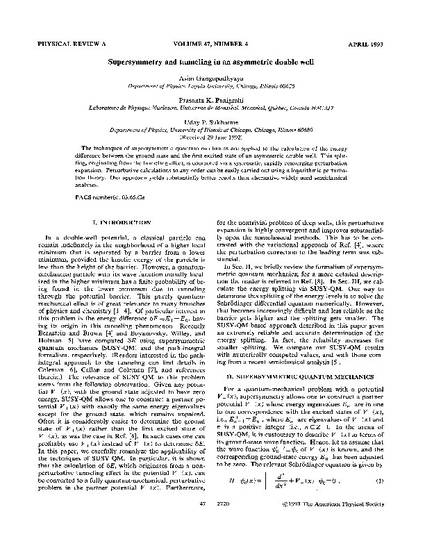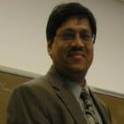
Article
Supersymmetry and the Tunneling Problem in an Asymmetric Double Well
Physical Review A
Document Type
Article
Publication Date
4-1-1993
Disciplines
- Other Physics and
- Physics
Abstract
The techniques of supersymmetric quantum mechanics are applied to the calculation of the energy difference between the ground state and the first excited state of an asymmetric double well. This splitting, originating from the tunneling effect, is computed via a systematic, rapidly converging perturbation expansion. Perturbative calculations to any order can be easily carried out using a logarithmic perturbation theory. Our approach yield substantially better results than alternative widely used semiclassical analyses.
Identifier
PMID: 9909242
Creative Commons License
Creative Commons Attribution-Noncommercial-No Derivative Works 3.0
Copyright Statement
© American Physical Society, 1993.
Citation Information
Gangopadhyaya, A., Panigrahi, P.K., & Sukhatme, U.P. (1993). Supersymmetry and tunneling in an asymmetric double well. Physical Review A, 47(4), 2720-2724.

Author Posting. © American Physical Society, 1993. This is the author's version of the work. It is posted here by permission of American Physical Society for personal use, not for redistribution. The definitive version was published in Phys. Rev. A 47, 2720, (31 March 1993). http://dx.doi.org/10.1103/PhysRevA.47.2720